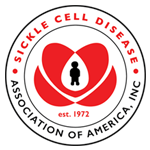
Download the MARAC Alert | Download Spanish Translation | Download French Translation
December 14, 2020 – News is evolving rapidly about COVID-19 and COVID-19 vaccines. Early results from the COVID-19 vaccine trials are very promising, although the true benefits and risks will not be known until a larger number of people receive the vaccine.
The Centers for Disease Control and Prevention (CDC) lists sickle cell disease (SCD) as one of the populations vulnerable to severe COVID-19. Sickle cell disease raises the risk for serious problems with COVID-19, especially when compared to the same age in the general population.
What about side effects?
Side effects from the vaccine are possible. Reported side effects include redness and soreness at the injection (shot) site, headache, fever and body aches. These side effect symptoms go away after a few days. The second injection may have more of these side effects than the first injection, but they also went away after a few days. Two severe allergic reactions were reported and seemed to occur only in people with a history of severe life-threatening allergies.
Based on current information, MARAC recommends that people with sickle cell disease receive COVID-19 vaccination.
- The benefits of vaccination outweigh the risks for people with SCD. Vaccination is worthwhile compared to the risks of having COVID-19 disease in people with SCD.
- Consult with your doctor or health care team about whether your personal medical condition causes an exception to this general recommendation. Key risk conditions for the vaccines made by Pfizer and Moderna (mRNA vaccines) are a history of life-threatening allergic reactions to polyethylene glycol
(PEG), another vaccine or other injectable medicine. - The fact that SCD affects the immune system should not cause a safety problem for COVID-19 vaccines.
If a clinical trial is available, consider joining so that we can understand how vaccines or treatments work best for people with SCD. - Don’t relax your precautions right after getting the vaccine. You might still get infected in the few weeks following vaccination. You could still give infection to those around you. Continue to wear a mask covering your nose and mouth. Wash your hands often. Maintain physical distance. Avoid crowds, and avoid people who are ill.
Frequently Asked Questions based on CDC information as of 12-13-2020
Is a booster dose of vaccine necessary? Can I get two doses of two different kinds of vaccine?
We don’t really know. The testing was done with two doses of each vaccine so that is the recommended plan. Getting just one dose or a mixture of two vaccines might be a waste of the shot and leave you with incomplete protection. The v-safe smartphone app will remind you when it is time to get the second dose.
If I had COVID-19 disease should I still get a vaccination against COVID-19?
Probably yes, but wait until your isolation period is over. Talk to your doctor.
If I just had COVID-19 exposure, should I still get a vaccination against COVID-19?
Probably yes, but after a quarantine period. Talk to your doctor. If you live in a group setting, it might be worthwhile to protect others by getting the vaccine without waiting for quarantine to end.
How is the safety of these vaccines being tracked?
v-safe is a smartphone-based tool that uses text messaging and web surveys to provide personalized health check-ins after you receive a COVID-19 vaccination. This will allow you to quickly share any vaccine side effects with the CDC.
I have some allergies. What allergy history is worrisome?
- Key risk conditions for the mRNA vaccines are a history of life-threatening allergic reactions to components of the vaccine, to another vaccine or injectable medicine, or allergy to polyethylene glycol (PEG). Talk to your doctor. You might need to be deferred from the mRNA vaccine, or just monitored for 30 minutes after the injection.
- Allergic reactions that were not life-threatening and allergies to food, insects, oral medications, dust, or pollen are probably OK for the mRNA vaccines. Talk to your doctor. You should be watched for at least 15 minutes after the vaccine.
- Talk to your doctor.
- Sign up for v-safe from your smartphone’s browser at vsafe.cdc.gov.
